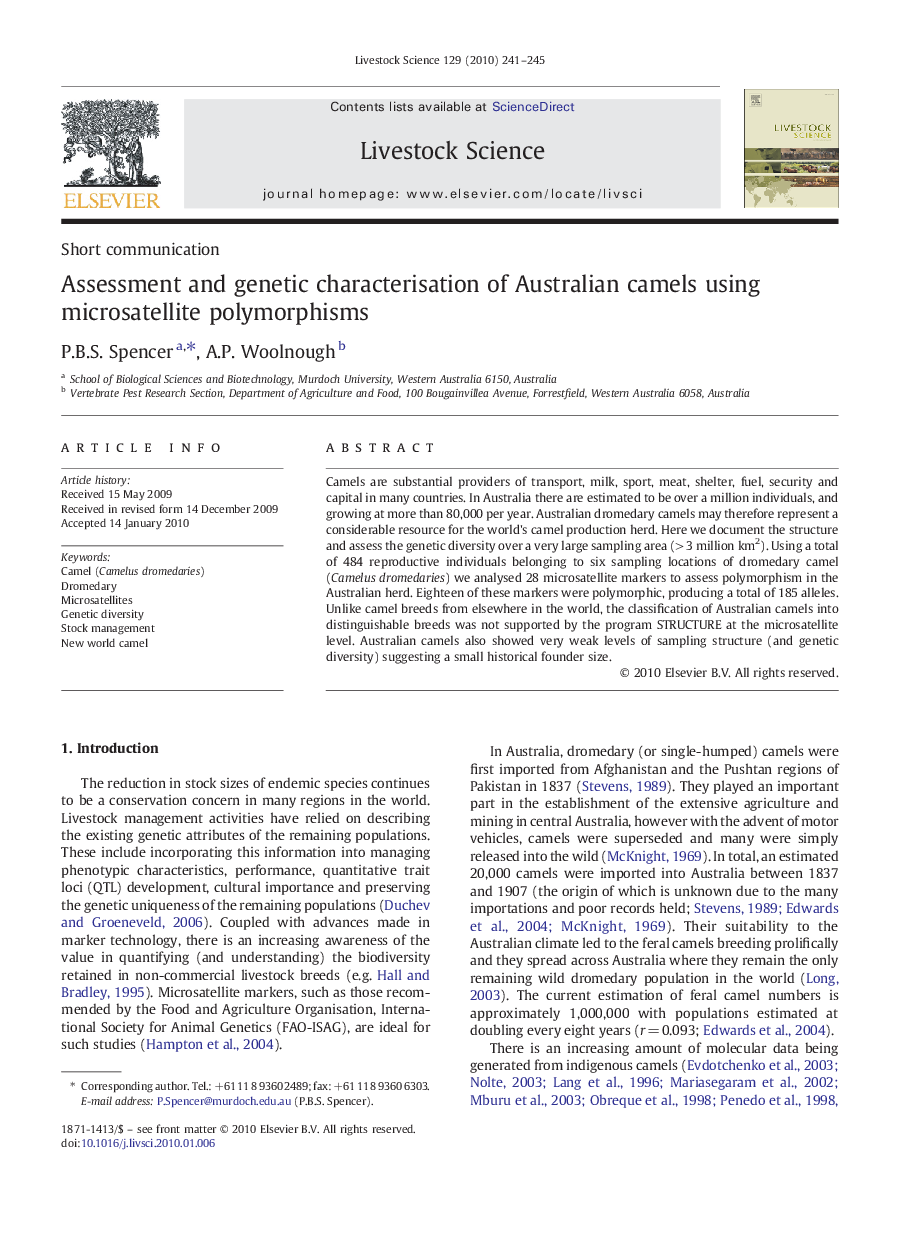| Article ID | Journal | Published Year | Pages | File Type |
|---|---|---|---|---|
| 2448028 | Livestock Science | 2010 | 5 Pages |
Camels are substantial providers of transport, milk, sport, meat, shelter, fuel, security and capital in many countries. In Australia there are estimated to be over a million individuals, and growing at more than 80,000 per year. Australian dromedary camels may therefore represent a considerable resource for the world's camel production herd. Here we document the structure and assess the genetic diversity over a very large sampling area (> 3 million km2). Using a total of 484 reproductive individuals belonging to six sampling locations of dromedary camel (Camelus dromedaries) we analysed 28 microsatellite markers to assess polymorphism in the Australian herd. Eighteen of these markers were polymorphic, producing a total of 185 alleles. Unlike camel breeds from elsewhere in the world, the classification of Australian camels into distinguishable breeds was not supported by the program STRUCTURE at the microsatellite level. Australian camels also showed very weak levels of sampling structure (and genetic diversity) suggesting a small historical founder size.
